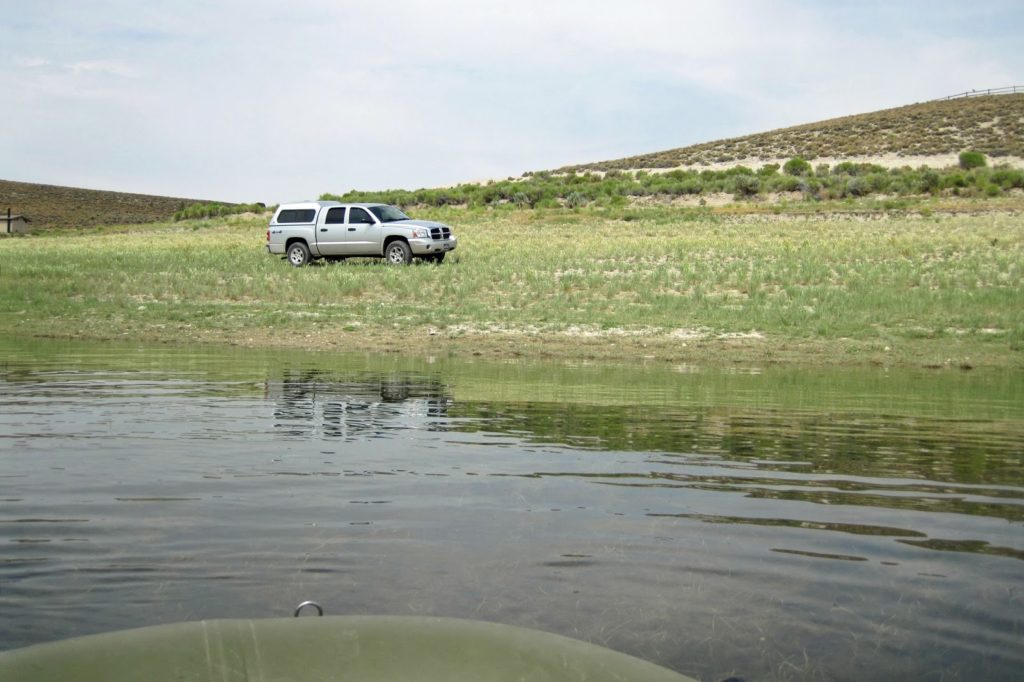
I took a long day-trip to Illipah Reservoir in White Pine County. It has been four years since I last fished Illipah, and it has always intrigued me as a fishing destination. I don’t exactly recall how I came to learn about Illipah. It may have been my brother Neal who first told me about it, or I could have seen it in the Nevada Department of Wildlife (NDOW) brochure and website. I do know that former Las Vegas City Manager, Larry Barton, fished it frequently in the late 1990s. Several times I heard him describe the Illipah fishing with great enthusiasm. Larry was a fly fisherman as well, so his commentary seemed to have more significance for me.
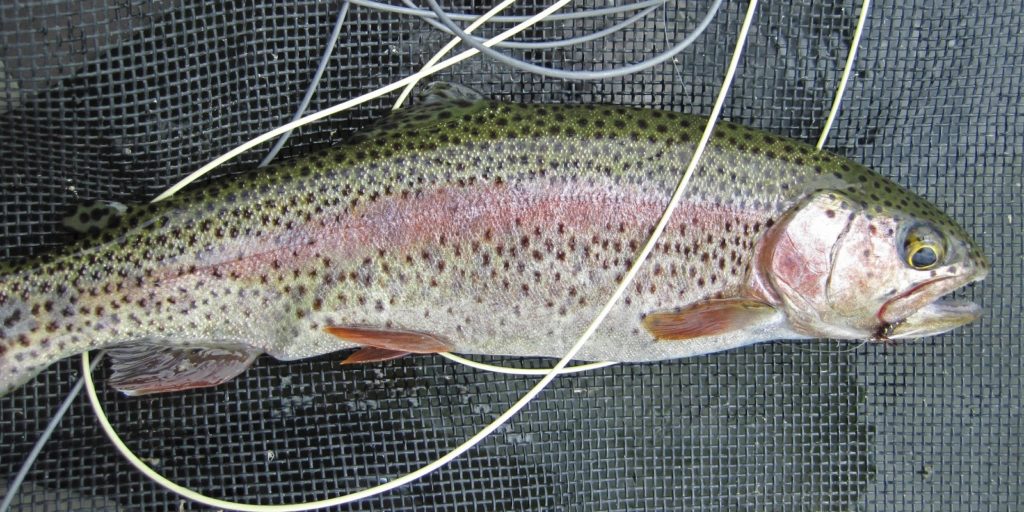
I first fished Illipah in June of 2000. My sons Doug and Tom were camping with me at Cave Lake State Park outside Ely. From that base camp we visited Lehman Caves at Great Basin National Park and fished several waters (Silver Creek Pond, Cave Lake, Illipah Reservoir, and the Ruby Lakes Ditch). On that trip I fished Illipah just an hour or so, catching but one trout. I don’t know how much the boys recall about that camping trip, but I know they still remember hitting the Silver Creek Pond just after it had been stocked. We had the farm pond all to ourselves, and Doug and Tom hauled trout out of the reservoir on practically every other cast (everyone’s first fishing experience should be so successful). My next visit was in May of 2004. That was my first fishing trip ever with a float tube (Fish Cat), and I described the experience as “unbelievable” in my May 14, 2004 blog post. (Hopefully, my blogs have become slightly more polished since that post.)
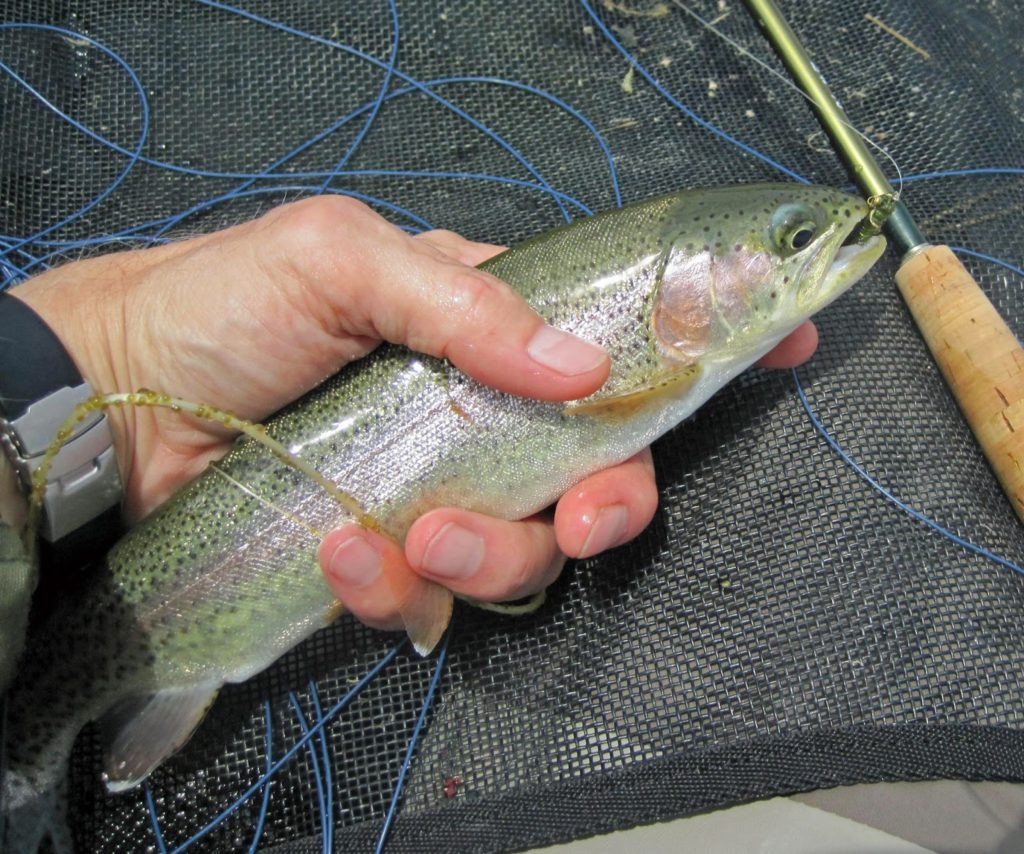
Illipah Reservoir was created in 1953 when Illipah Creek was impounded for irrigation purposes. In an agreement with the rancher to guarantee a minimum pool, NDOW paid for the dam construction. The reservoir was enlarged in 1981. Although located almost entirely on private land, the adjacent land is managed for recreation by the Bureau of Land Management under a cooperative agreement with NDOW. The Illipah Reservoir covers 70 surface acres to a maximum depth of 50 feet. Rainbow trout, stocked twice annually, and a self-sustaining population of brown trout currently inhabit the reservoir. The fishing is good year around, but it peaks in spring and fall. Illipah is located 34 miles west of Ely on Highway 50, where you turn south (left) at the sign and follow the dirt road 1½ miles to the reservoir. Muddy conditions occur when the road is wet, so use caution.
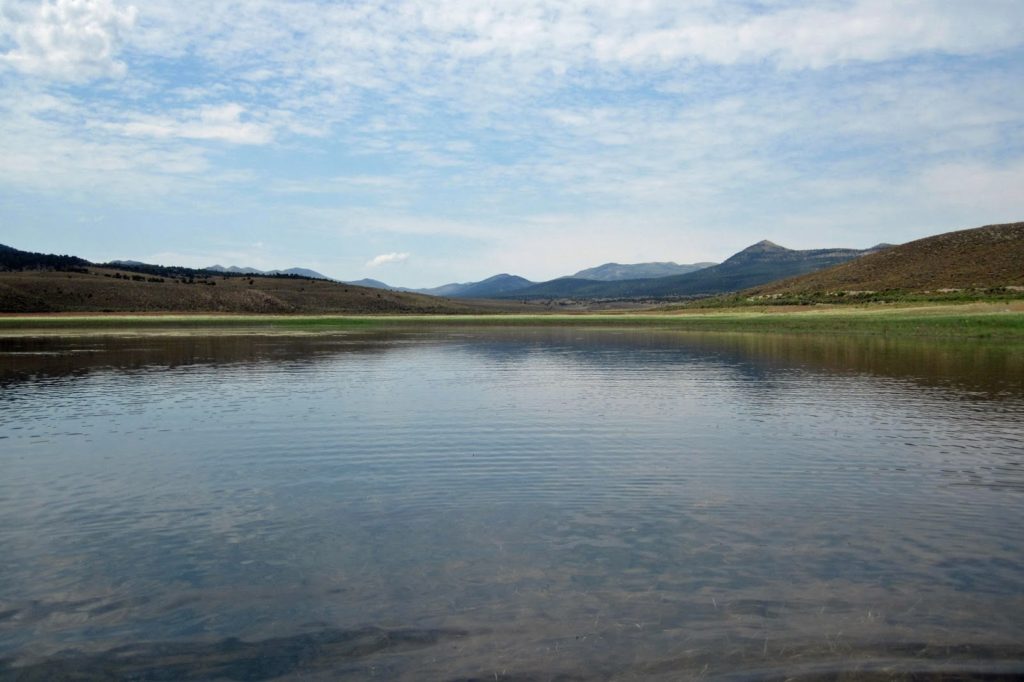
One fascination about Illipah, which I’ve never personally satisfied, is the nearby ghost town of Hamilton. Silver was discovered in Treasure Hill in 1867, two years after the end of the Civil War, which led to the creation of the town of Hamilton. In 1868 the silver rush resulted in over 10,000 people coming to the area. White Pine County was formed in 1869 with Hamilton as its seat. At that time there were almost 20,000 people living in Hamilton, and the town site grew to about two square miles. As was the case with most all of these mining boom towns, by 1870 the mining had come to a halt. A fire in 1873 signaled the coming end for Hamilton, and a subsequent fire in 1885 was the coup de grâce, and the county seat was then moved to Ely where it resides today. For a young family wanting to explore remote places in Nevada, Illipah and Hamilton fill the bill. Although the Illipah campsites are somewhat primitive, the BLM maintains the campground with picnic tables, fire pits, windscreens, vault toilets, and trash barrels. As the crow flies, Hamilton is about 7.5 miles southwest of Illipah.
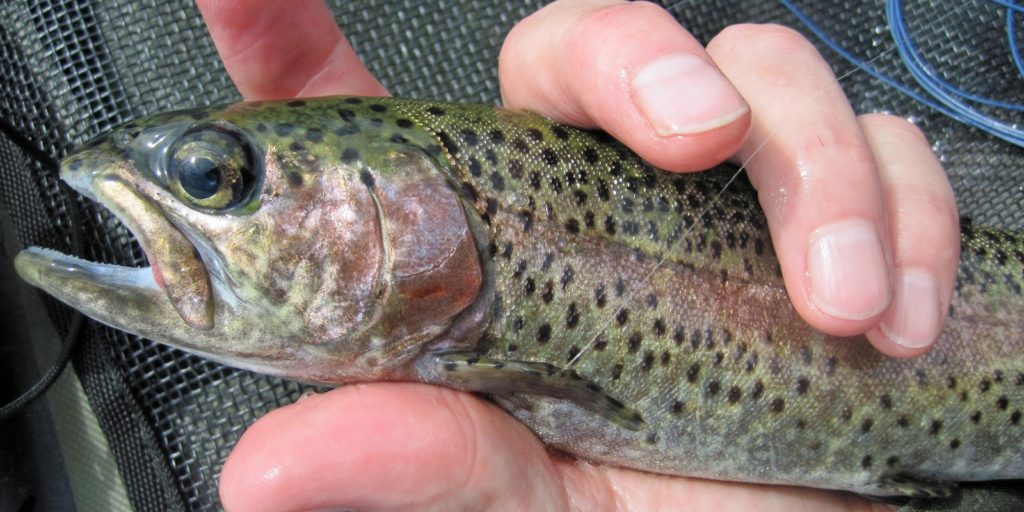
Today’s fishing action was extremely brisk, although no brown trout were landed, and no trout was over thirteen inches. In the six hours I fished, including a 30 minute thunderstorm delay, I hooked 45 rainbow trout, landing 34 and experiencing 11 long-distance-releases. That averages to a hook-up every 8 minutes, and a trout brought to hand every 10.5 minutes. I was pretty busy out there.
The brown trout are the real attraction of Illipah for me. Landing the 17 inch brownie in 2004 on a small emerger nymph in the shallow shoreline was an awesome experience. I hope to replicate that again someday with a larger specimen.
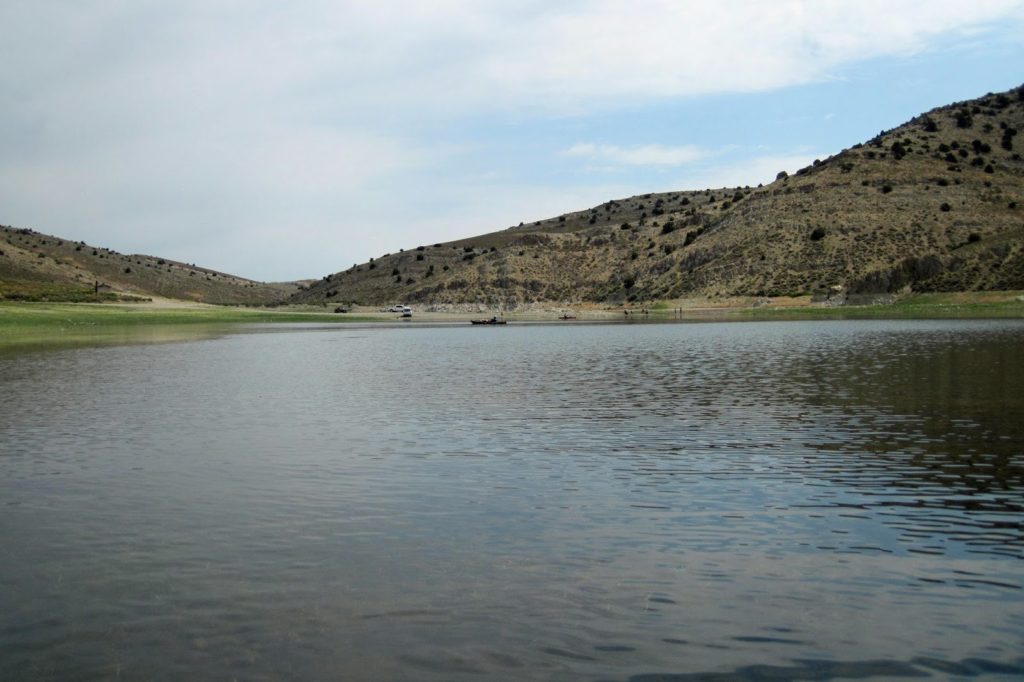
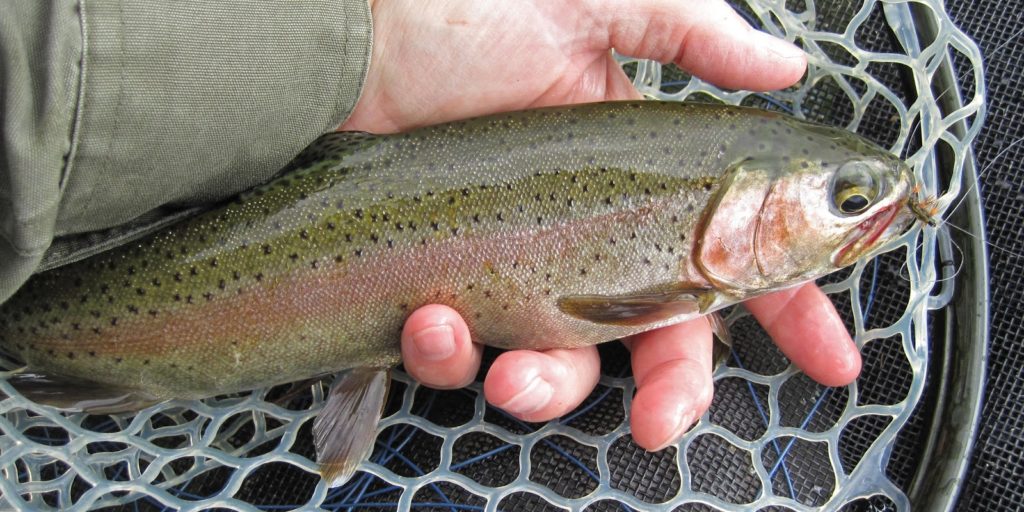
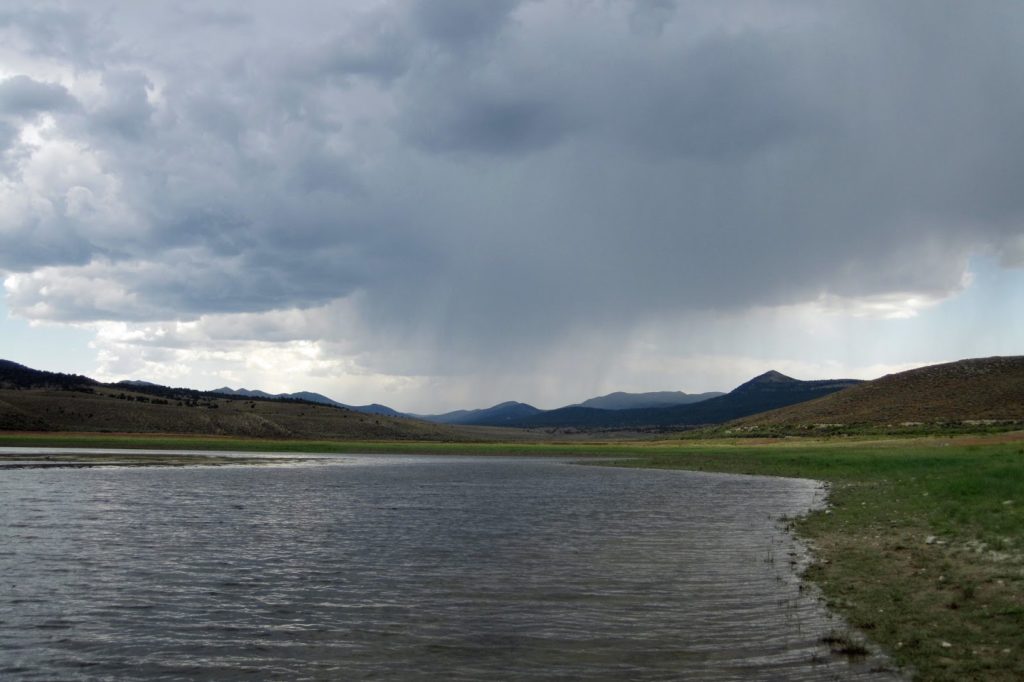
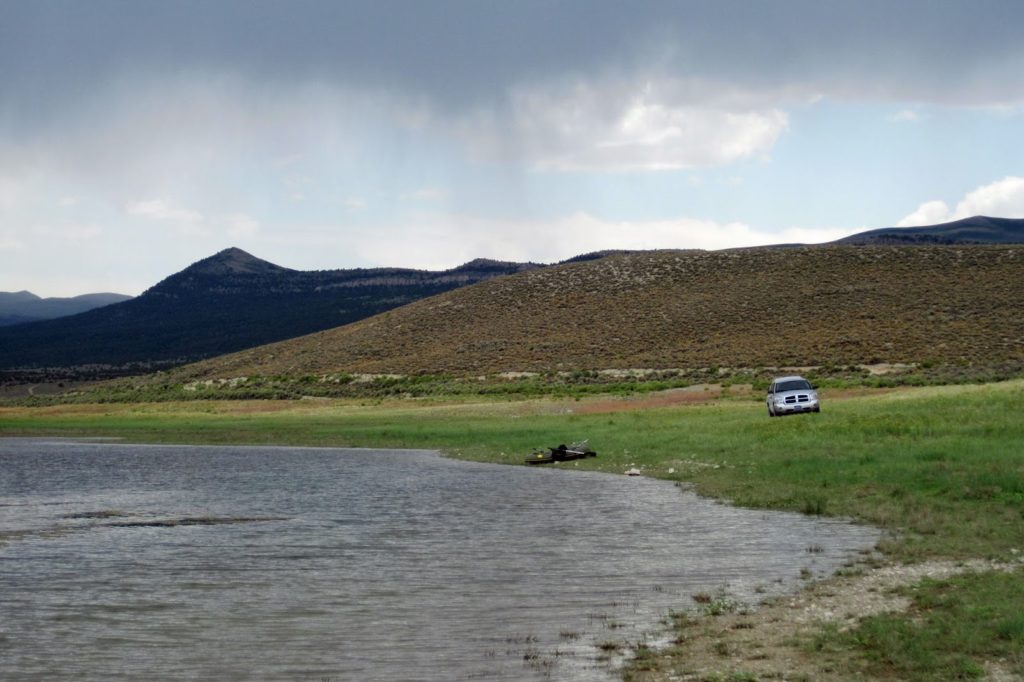
When the mid-afternoon thunderstorm interrupted my tubing I decided to beach the Water Master and fish the western shoreline. That decision turned out to produce quite a bit of fun. I switched from my 5-weight to my 7½ foot 4-weight. Using a floating line with an array of nymphs (frankly, it didn’t seem to matter which ones), I was catching trout just 20 to 30 feet off the bank, and usually nestled up against the weed beds. It was very similar to dry fly fishing, and the light tackle made playing the smaller stocked trout enjoyable.
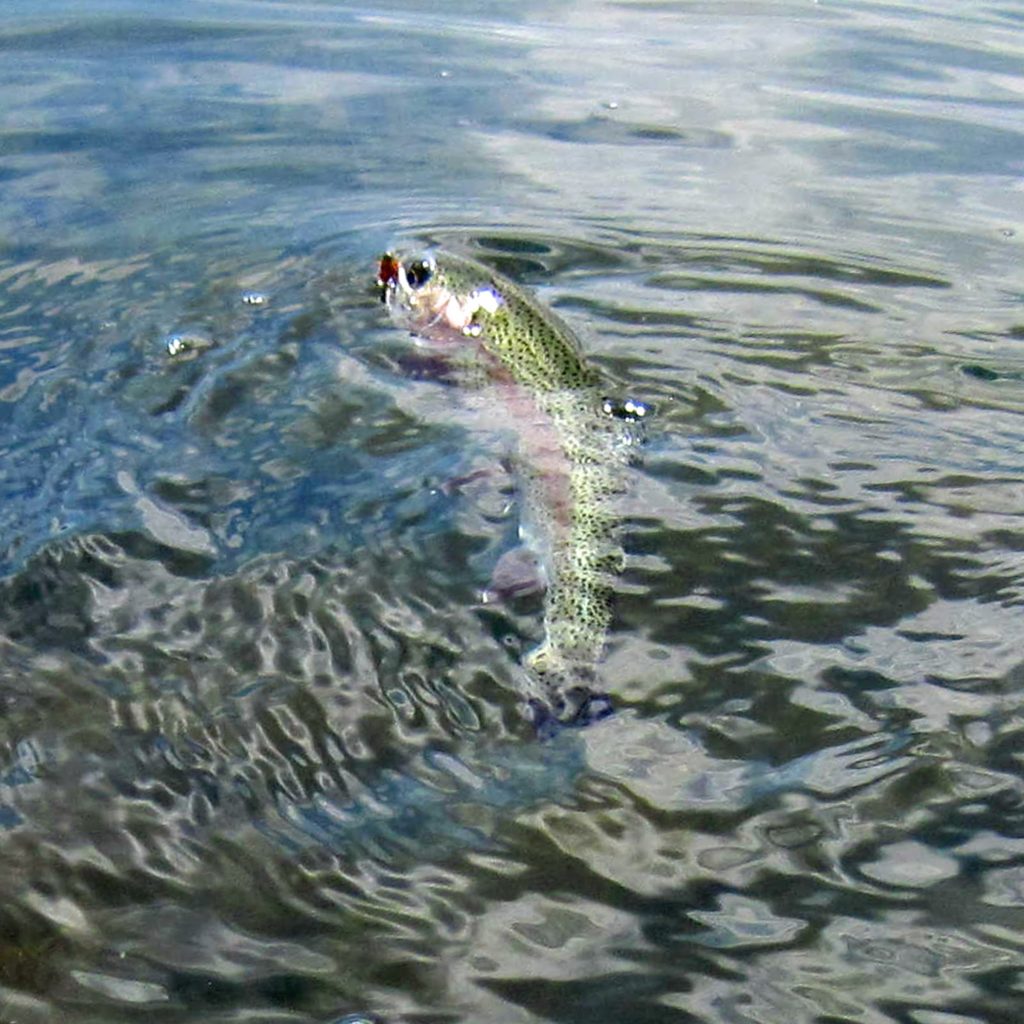
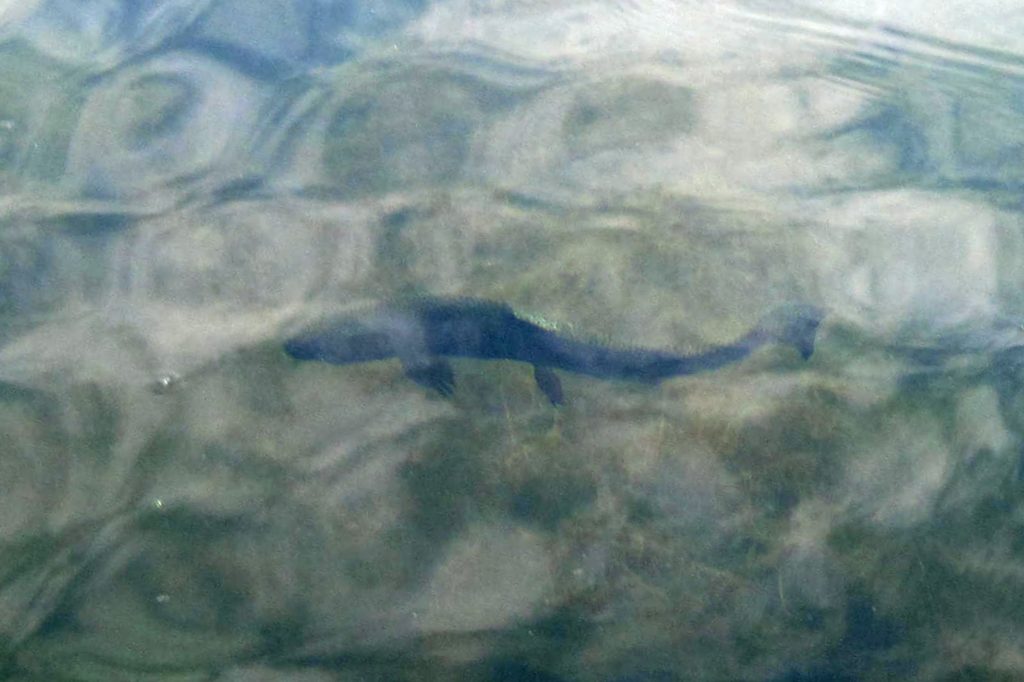
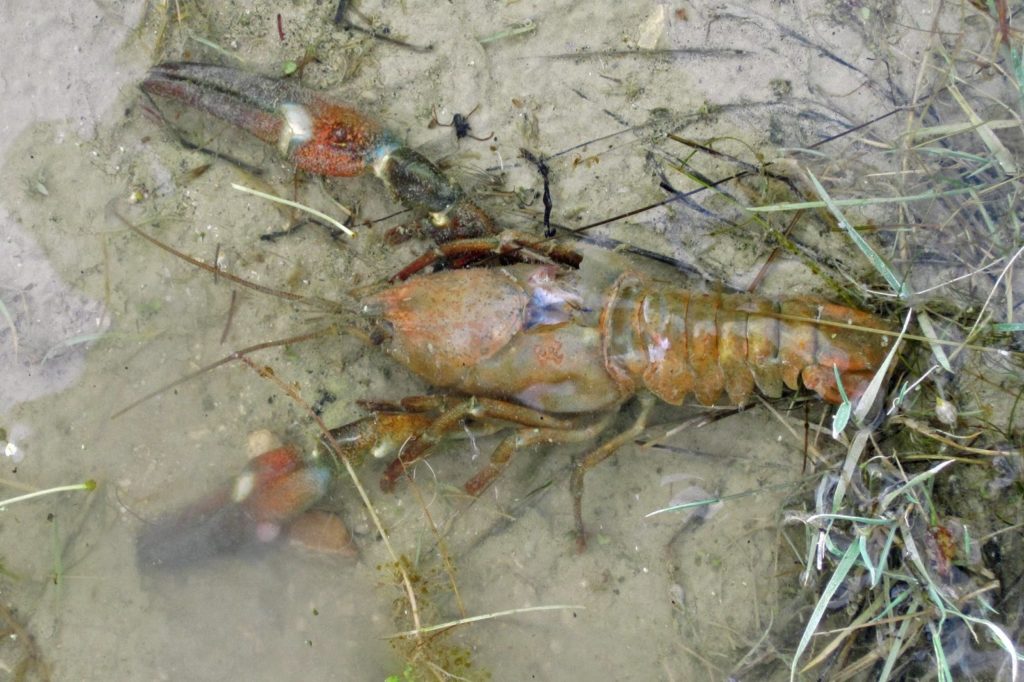
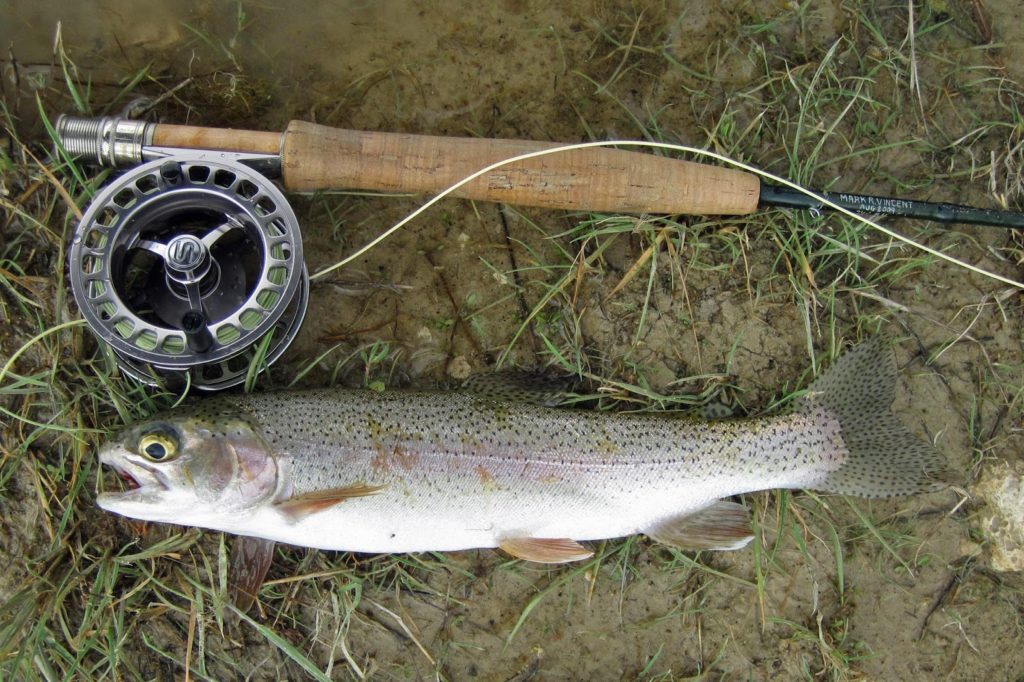
I had noticed what looked to be larger fish jumping on the eastern side of the reservoir, so when there was a lull in the thunderstorm I launched the Water Master again and oared over to check it out. There were larger fish working along the weed beds, and I was still using the light 7½ footer. Based on what I witnessed, I think several of the trout were in the 14 to 16 inch range. They were more wary, and often they’d move down the weed line just beyond my efficient casting range. I did manage to get a few strikes from larger fish, at least they looked like strikes, but I mistimed my reaction. I was enjoying the newly discovered “stalk and shoot” approach to angling when the second thunderstorm arrived (I had been watching the dark clouds approaching). It was then that I decided to get back to the Trout Truck and head home.
Despite the trout being considerably smaller than those in Dacey Reservoir last May, I really enjoyed this trip. Normally the weather at Illipah can be close to 90° by mid-summer, but today’s cloudy skies and intermittent thunder showers kept the temperature right about 70°, roughly 40° less than it was in Las Vegas… who wouldn’t appreciate that? And while there were a handful of anglers on this Thursday, I really had my run of the reservoir; for all intents and purposes I was angling in solitude.
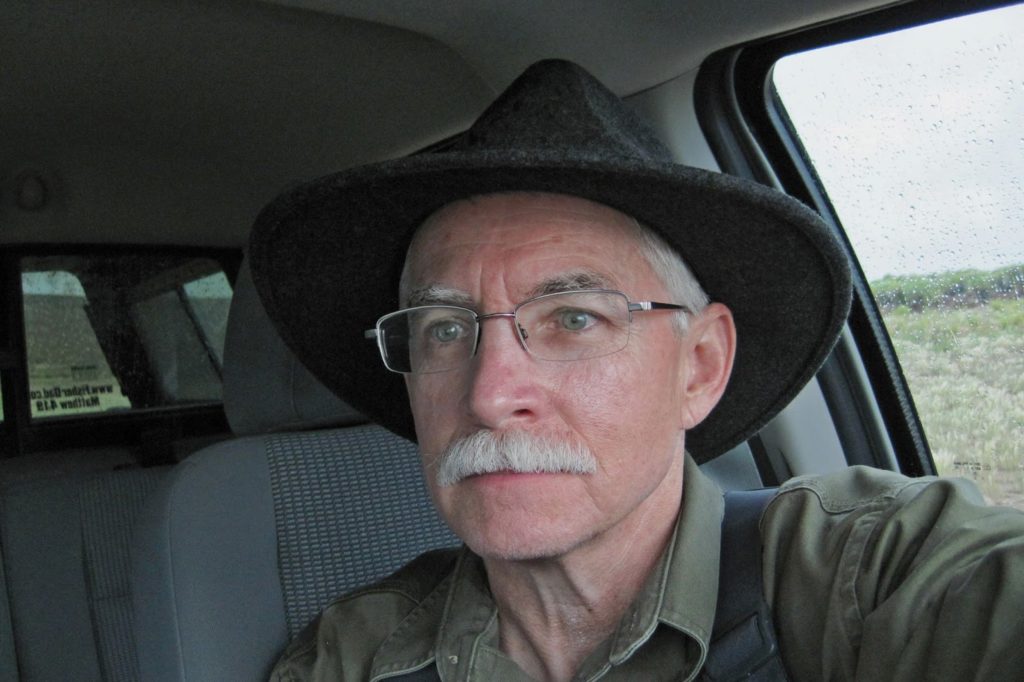
Speaking of solitude, the driving time was a relished respite from a busy couple of weeks. For most all of the driving I kept the cab quiet except for my conversation with the Lord. As much as I try to make quiet time to be fully in His presence, there seems to always be a distraction or an interruption. I truly savor these trips to simply talk with God, and more importantly, to be able to listen to Him. John 8:47 says “Anyone who belongs to God listens gladly to the words of God. But you don’t listen because you don’t belong to God.” I don’t ever want to be in a place where the Word is not with me, or where Jesus says I don’t belong to Him. I want to be like the young prophet Samuel who replied “Speak, your servant is listening” when he heard God call his name (1 Samuel 3:10). Many are familiar with Jeremiah 29:11 (“For I know the plans I have for you,” says the Lord. “They are plans for good and not for disaster, to give you a future and a hope”), but the Lord in verse 12 goes on to say “In those days when you pray, I will listen.” Of course, listening to the Word of God is only part of the battle; being obedient to his instruction is where the rubber meets the road. We must “give heed” to his word (Proverbs 16:20) and “put them into practice” (Matthew 7:24) because “those who hear the word of God and obey it” are blessed (James 1:25).
So, my prayer is that you can be still and hear the voice of the Lord in your life, and let it guide your ways into eternity.
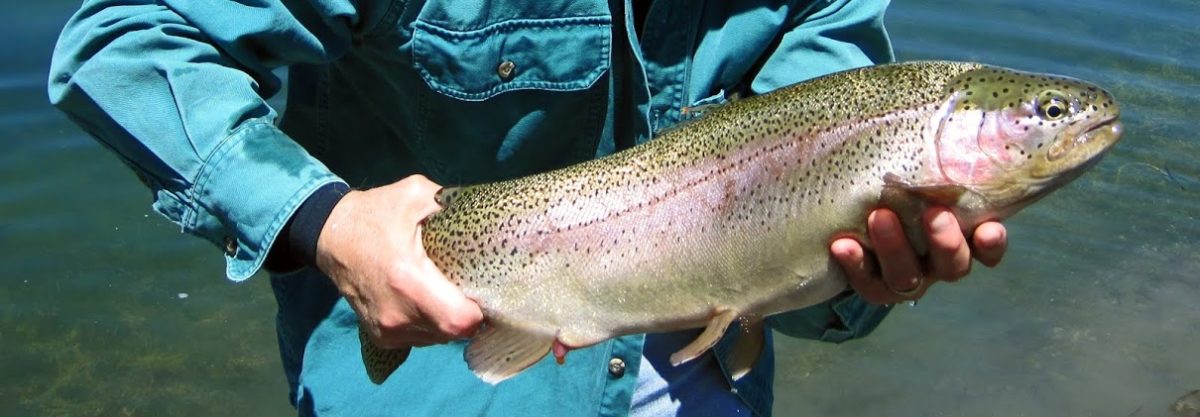
Great read Mark. Nice to see how well retirement is treating you!
Well, FisherDad, this is a shot in the dark but here goes…
I recently took delivery of a WaterMaster Grizzly and can’t wait to get it wet. A few days ago I was surfing – don’t remember where – and saw a photo of a WaterMaster tied down on top of a pickup-camper rig much like the one in the photo on this entry.
I saw what looked like the bow of a WaterMaster in the photo, a green similar to theirs, so I wondered if that might have been you.
Wanted to reach out because I don’t have a trailer or anyplace to park one, so, I am faced with setting up and breaking down my Griz each time I go out, or, strapping it to the top of my GMC Envoy…I should tell you I am in Dallas, and when I fish I go to one of a number of private lakes in North Texas – usually just for the day – so setting up/breaking down my Griz in one 8-hour period is something I would prefer to avoid at 71 years old and with a replaced shoulder. Alas, no place to keep it in the garage either.
Was wondering if this was you and if so would you care to share about how you transport your craft.
Best regards,
Paul
Paul –
Sorry to say that it wasn’t me. I don’t strap my Grizzly on top of my truck, nor do I trailer it.
I had thought about getting a reinforced bed cap with a rack on top. Not so much to travel on the highway with the boat inflated, but more for after reaching my destination so that I could travel back and forth to camp or even relocate from one nearby reservoir to another. I never warmed to the idea of travelling at highway speeds with that boat strapped on top, partly because of the wind-drag it would create and partly because I was concerned about securing it correctly. Also, there was the prolonged exposure to the heat and UV light, and the possibility that after inflating it properly at cooler high-altitude lakes I might forget to reduce the air pressure before descending into the hot Great Basin valleys thereby causing damage to the seams.
I use an electric pump to inflate the Grizzly. It takes about 5 minutes to fill both air chambers. Then I use a K-Pump to top them off. The K-Pump is easier to use than a foot pump or the double action hand pumps, and it only takes a few strokes to top-off the air chambers. I made my own hose for the electric pump using a large polytube with the proper fittings glued on the ends (i.e., the electric pump output and the adapters that connect to the Grizzly valve). Including attaching the seat, oars, and other add-ons it maybe takes a full 10 minutes to prepare the Grizzly for launching.
If interested I can give you more details on how I assembled the polytube for the electric pump.
All the best,
– Mark